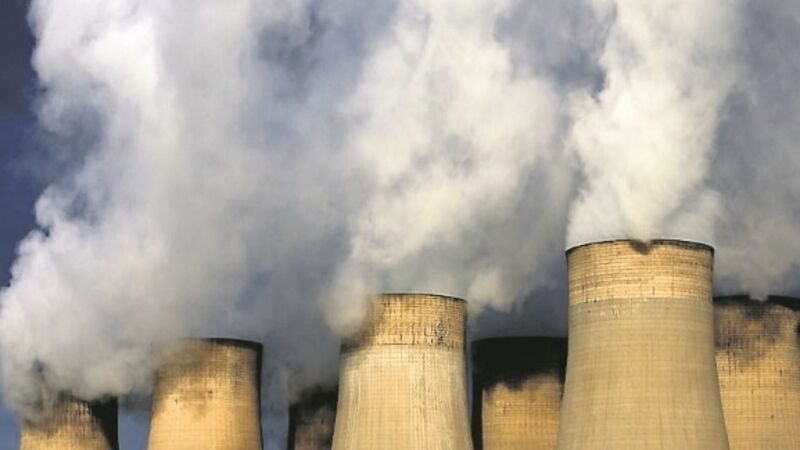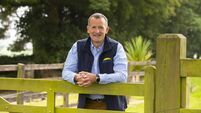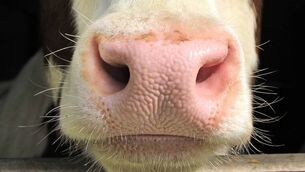Future fines for emissions will change prospects for every sector in the economy

Part two of our look at the implications for rural life and for farming of the likely measures to reduce greenhouse gases
With Ireland “completely off course” (according to the Climate Change Advisory Council) in terms of its 2020 or 2030 targets to reduce emissions, measures to get back on course are more and more likely.
Possible measures include:
Fuel for motor and lorry transport, and to heat our homes, is a major source of our emissions, and increasing rapidly with recent economic growth. There is a carbon tax on these fuels (and other taxes), but we can certainly expect the Government to increase these taxes, probably in the budget next October.
One objective is to encourage use of electric cars.
Higher fuel taxation will put up costs for business in the short term (as an island economy, we depend much more heavily on road transport, for exports and imports).
It will also have a greater impact on rural dwellers than on city dwellers.
Trees are not popular among farmers. As the farmer/songwriter, Micheál Marrinan wrote:
There’ll be no one living now between the schoolhouse and the mountain,
On the hill Jack Murphy ploughed, so many trees you could not count them.
Growing trees is seen by many as an admission of farming failure. Yet, trees could provide higher farm incomes than beef or sheep.
The Government has subsidised tree growing for many years, but annual afforestation targets are not being achieved. Afforestation has fallen from over 20,000 hectares per annum in the late 1990s to around 6,000 hectares in recent years. We need to plant at least 15,000 ha per year up to 2030, according to some commentators, because trees absorb carbon. If we had more forestry, some of the extra carbon being generated by — for example — the dairy and transport sectors could be absorbed, thus reducing the potential for national fines and penalties.
Ireland has been allowed to claim credit over the 2021-2030 period for 26.8m tonnes of carbon “sequestered” by increasing forestry, and by better grass management.
It is surely better to pay money for more trees at home than in emissions costs to the EU or other member states.
In the revised CAP, might it become a condition of receiving the Single Farm Payment that a certain percentage of the farm be planted with trees, within a five-year period ?
An undisturbed bog absorbs carbon (and reduces flooding dangers). However, a Government subsidy encourages removal of turf from bogs to be used in the ESB power stations in Laois and Offaly. This subsidy aids employment and energy production in these areas.
Turf burned in a domestic fire or a power station is one of the worst emissions emitters, considerably worse than coal or oil.
Continuation of the Government’s turf subsidy has been heavily criticised by the Climate Change Advisory Council, and in particular by its Chairman, economist Professor John Fitzgerald (son of the former Taoiseach, Garret Fitzgerald). He says consumers pay an extra €3.50 on every electricity bill to subsidise continued use of turf. If the subsidy were abolished, emissions would fall substantially.
The subsidy was to end next year. But a recent decision would see continuation of the subsidy, for peat used in conjunction with biomass.
Given the considerable emissions fines Ireland may face, it seems crazy for the Government to subsidise an operation which increases emissions (though you might think differently if you were employed in Laois or Offaly).
Many rural dwellers object to wind farms. But wind is a native source of energy that does not emit carbon.
Objectors must consider the absolute necessity to reduce carbon emissions, both from moral and economic perspectives, and wonder whether the turbines and pylons are a small price to pay.
Objectors are also appearing to more recent developments to produce wind and wave energy from coastal sites.
Much of the growth in emissions in recent years has been caused by our increased economic growth. More people are employed, and car numbers and travel have increased. The IDA continues to attract multinationals.
We are proud to see ourselves at the head of some European league tables.
But there may be cause to question some aspects of this growth in the context of global warming commitments.
For example, data centres have been particularly in the news, because of objections to a projected centre in Athenry.
Data centres use enormous quantities of power.
There is already a considerable number of these centres in Dublin. If demand for electricity increases rapidly because of new data centres, we have to run harder to stand still, in the race to reduce carbon emissions.
Like the beef sector, there are questions to be asked about further expansion of data centres.














